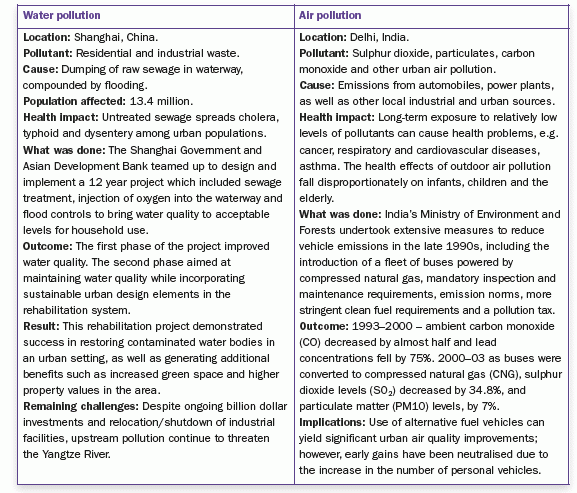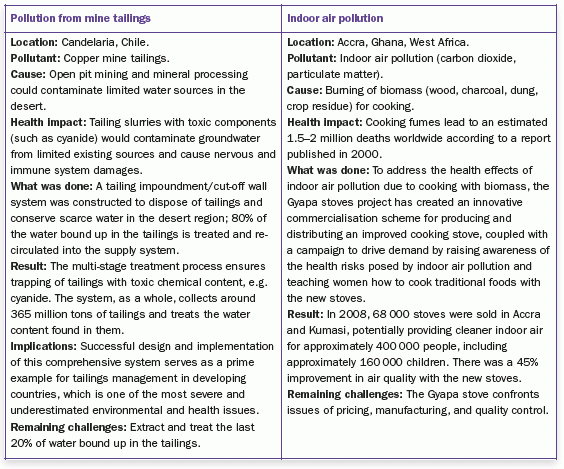Pollution
What is pollution?
Pollution occurs when contaminants are introduced into the environment – they harm or destabilise ecosystems. Annually the Blacksmith Institute in the USA issues its world’s ‘most polluted listings’. In 2009 they identified Azerbaijan, China, India, Peru, Russia, Ukraine and Zambia as the most polluted countries.
Pollution may be categorised as:
- water
- noise
- soil.
- air
- visual
Three things determine the severity of pollution:
- The chemical nature of the pollutants.
- The concentration of the pollutants.
- The persistence of the pollutants.
Toxic pollution is a health and economic catastrophe – mostly the poorest in developing countries are affected. The pollution of air, water and soil contribute to 40% of deaths annually around the world. In some instances on-going toxic activities are to blame. In other places the legacy of now defunct activities causes problems.
Where long-term health is affected the poverty of such areas deepens.
Modern awareness of pollution dates from the Second World War. In the UK the Great Smog of 1952 in London prompted the Clean Air Act (1956). In the USA various noise, air, water and environmental Acts; dioxin, PCB and Chromium-6 releases and various radioactive releases, Bhopal and land and sea oil disasters have drawn attention to pollution and encouraged clean-ups.
Case study: Bhopal, India (1984)
The world’s biggest industrial disaster occurred in Bhopal in India, 1984. Following an explosion 42 tons of methyl isocyanante was released into the atmosphere. Approximately 8000 people died and a similar figure have died since. At the time of the accident 558 125 people were injured, 38 475 were disabled and 3900 permanently disabled. The American owners Union Carbide paid $470million in compensation.
For the future
It is likely pollution will be controlled via one or more of the four ‘P’s!
- Proximity – pollution is dealt with at the source, e.g. waste computers will be decommissioned in the UK not sent to West Africa for them to deal with!
- Polluter pays – cost of pollution incidents are paid for by the polluter. This is part of the Kyoto Protocol (1998) and Copenhagen Conference (2009) detail.
- Prevention – stop at source, i.e. pollution ‘scrubbers’ in industrial chimneys, smokeless zones and zero emissions areas. Scrubbers are chemicals installed in the chimneys to scrub gases out as they pass over them.
- Precautionary – action taken whenever risk is proven, i.e. chemical bans (DDT for instance), chlorofluorocarbon (CFC) release acted on to reduce ozone depletion.
Key Point - Carbon trading targets carbon dioxide (calculated in tonnes of carbon dioxide equivalent) and is used by countries in order to meet obligations outlined in the Kyoto Protocol. It is an attempt to mitigate future climate change.
Pollution types and remedies
Examples of pollution incidents and how they were dealt with are detailed below.


